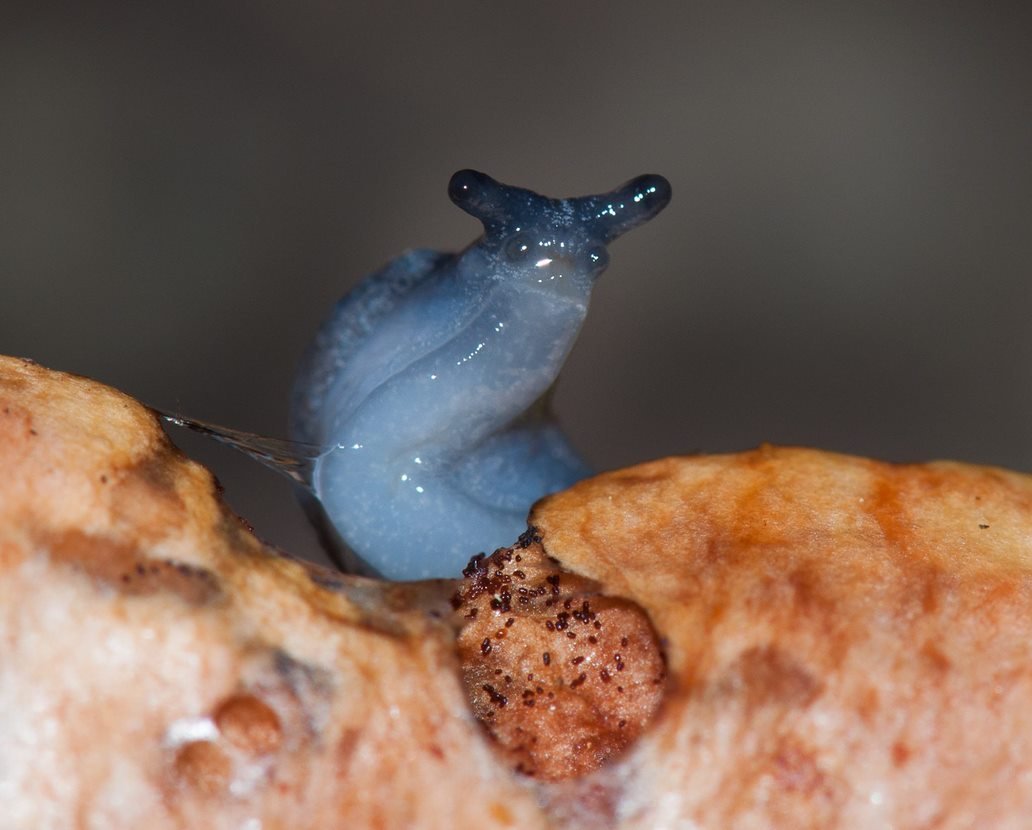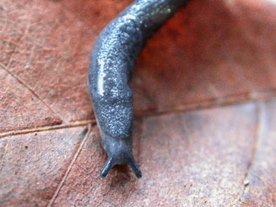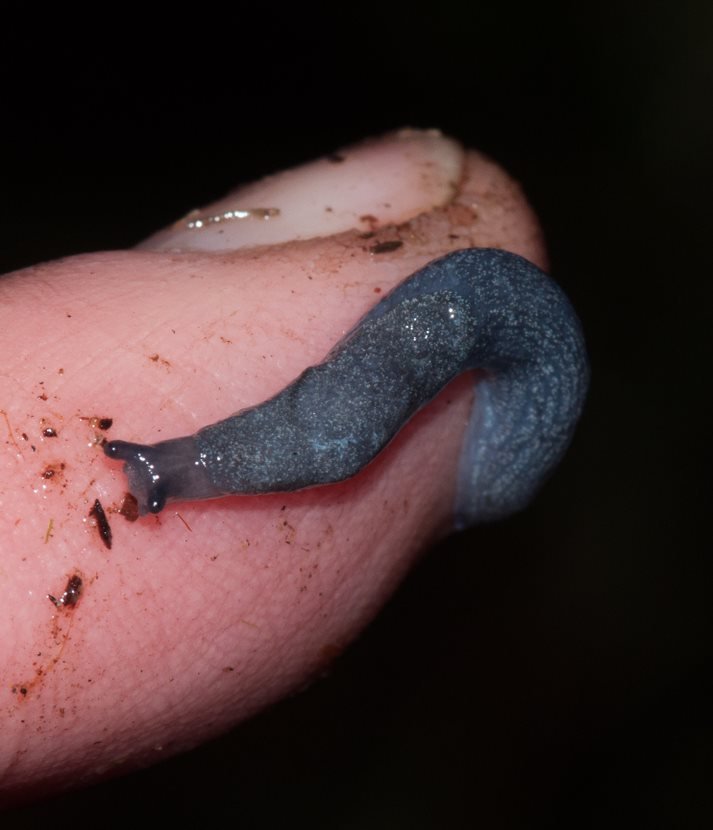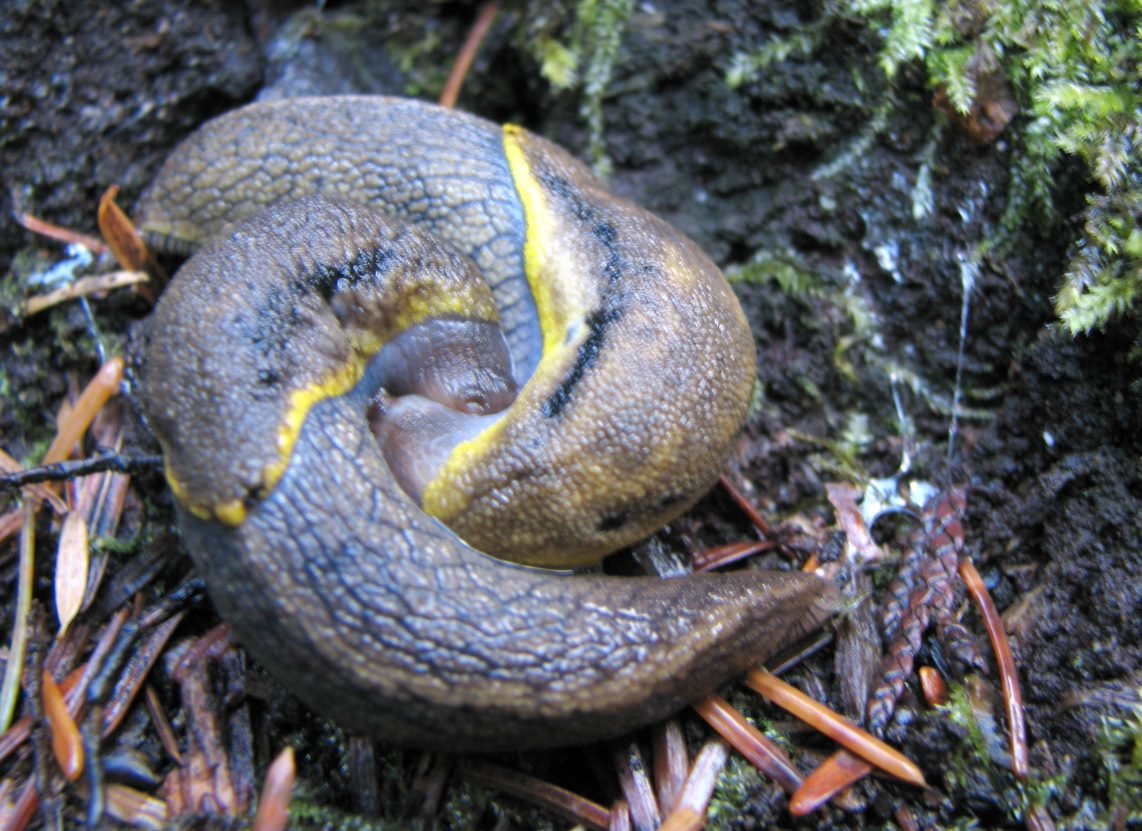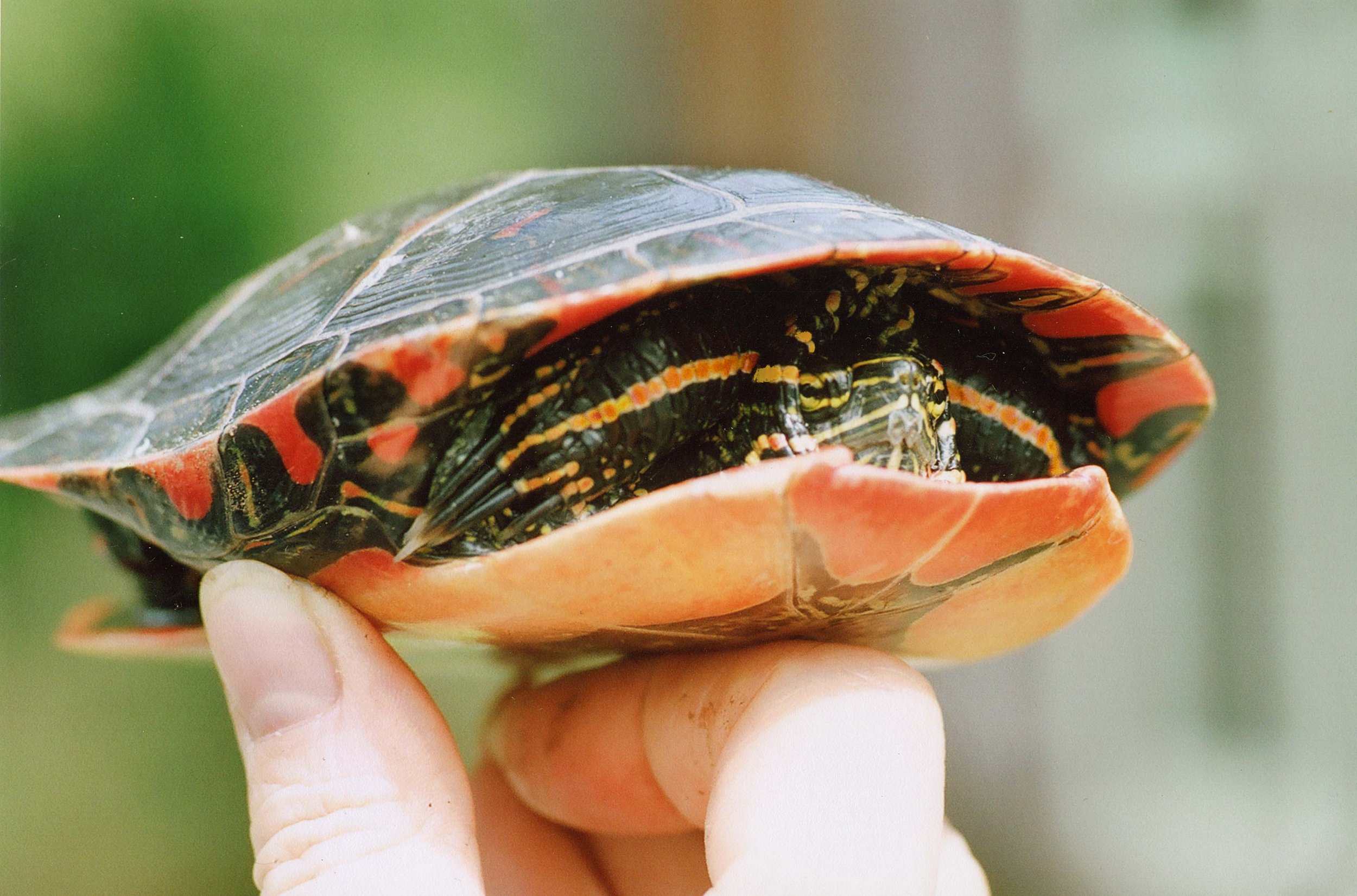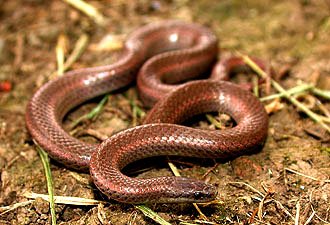
Blue-grey Taildropper
(Prophysaon coeruleum)
This tiny blue endangered slug is a native species that can drop their tails if frightened and is a very rare sight to see
Where Can I Find the Blue-Grey Taildropper?
While difficult to locate the Blue-Grey Taildropper may be found in a number of regional parks around Greater Victoria including: Horth Hill Coles Bay, Mt. Work, Trevlac Pond/Calvert Park, Thetis Lake, Roche Cove, Matheson Lake, and East Sooke
Learn More about this fascinating species by expanding the topics below:
-
The Blue-Grey Taildropper is a small slug associated with two endangered ecosystems: Garry oak meadows and mature Douglas-fir forest. Little is known about the slug except that it is extremely rare and that its habitat is shrinking. This slug is endangered due to its rarity and threats to its habitats from development and other human activities.
-
Size: 5mm (juveniles) up to 4cm (adults).Colour: Solid colour from blue to pale grey, often with some fine white speckling. Distinct parallel grooves and ridges on the back and sides of tail.
Check out HAT’s visual identification guide for further information and comparisons with other slug species. If you have a photo of a slug you are having difficulty identifying, please email it to hatmail@hat.bc.ca.
-
Committee on the Status of Endangered Wildlife in Canada (COSEWIC) Status: Threatened
Species at Risk Act (SARA) Status: Endangered
Provincial Status: S1 (Critically Imperiled)
BC List Status: Red (Extirpated, Endangered, or Threatened status)
-
In Canada, all records of the Blue-grey Taildropper are from 12 moist forests on southern and south-eastern Vancouver Island. Many records are from Garry Oak meadows and their fringes. The slugs also occur in Douglas-fir-dominated forests, especially in small openings with dense shrubs such as Ocean Spray. The slugs are found in moist microsites on the forest floor, such as within leaf litter, under Sword Ferns, within moss, or under decaying logs.
-
Not much is known about these slugs as they are difficult to find and low in numbers. However, biologists have been able to examine Blue-grey Taildropper’s droppings to determine their diet. In Oregon, biologists found fungal spores in 90% of the droppings examined. The spores were mostly from mycorrhizal fungi that form essential symbiotic associations with tree roots
-
Blue-grey Taildroppers face habitat degradation and loss through land modification such as urban development. Invasive plants displace native plants which harms Blue-Grey Taildropper through decreased habitat quality, altered microclimates and possible food availability. Introduced and/or invasive animal species cause increased competition for habitat, food, and shelter and also increase predation (likelihood of being eaten). Slugs love and need water to move and breathe, so more droughts associated with climate change will impact the ability for these slugs to forage and go about their slug-y lives.
The Blue-Grey Taildropper relies on Garry Oak and Douglas Fir ecosystems - both of which are endangered which puts every species who lives in them at greater risk.
Mycorrhizal fungi, believed to be the main food source for the Taildropper, grow on the roots of plants and trees and help them capture nutrients from the soil. This relationship between beneficial fungi and trees is essential for healthy forests. In areas where mycorrhizal fungus/plant relationships have broken down, trees take longer to grow and are not as healthy. The Blue-grey Taildropper and the few other animals that eat these fungi play a vital role in spreading the spores of mycorrhizal fungi, and each time one of these spore-spreading species is lost, the entire forest suffers.
Apart from its ecological role, the Blue-grey Taildropper has intrinsic value as a unique inhabitant of coastal Douglas-fir forests.
Why do we care?
All photos are credited to Kristiina Ovaska
Monitoring
In local parks, and on private land with appropriate habitat and interested landowners, HAT will set up artificial cover objects that Blue-grey Taildroppers like to shelter under. This allows us to check the cover objects without disturbing the natural habitat. Understanding the range and the habitat preferences of this small slug is an important step to protecting the species.
Public Land and Large Land Managers’ Stewardship
HAT helps the public and other large land managers in the CRD care for Blue-grey Taildroppers by identifying occurrences, steps that can be taken to protect known occurrences, training staff to look and care for Blue-grey Taildroppers, and when appropriate, developing Management Plans to help protect the slug and its habitat. Where Blue-grey Taildroppers are located, HAT works to conserve the population and their habitat through voluntary, non-legally binding agreements (stewardship agreements), and voluntary, legally-binding agreements (e.g. covenants).
What is HAT doing to help?
Landowner Stewardship
If a private landowner has a habitat for or a known occurrence of the Blue-grey Taildropper on their property, HAT can provide the landowner with habitat guidelines, gardening tips, and other advice that will help protect the slug and its habitat.
If you believe you have habitat or Blue-grey Taildroppers on your property please contact us.
And report your sighting on iNaturalist
Blue-grey Taildropper
Photo credit: Kristiina Ovaska
Photo credit: Kristiina Ovaska
Photo credit: Adam Taylor at Chase Woods, BC
Banana Slugs and Other Taildroppers
Banana Slug, Alanah Nasadyk
Banana Slug, Darcy Harnadek, Port Hardy BC
Yellow Bordered Taildropper
Scarlet Backed Taildropper
Resources
Blue-Grey Taildropper Reports
BGT 2017 Report: Results of Surveys Landowner Contact
BGT 2016 Report: Results of Surveys Landowner Contact
BGT 2015 Report: Results of Surveys Landowner Contact
BGT 2014 Report: Results of Surveys Landowner Contact
BGT 2013 Report: Results of Surveys Landowner Contact
BGT 2012 Report: Results of Surveys Landowner Contact






